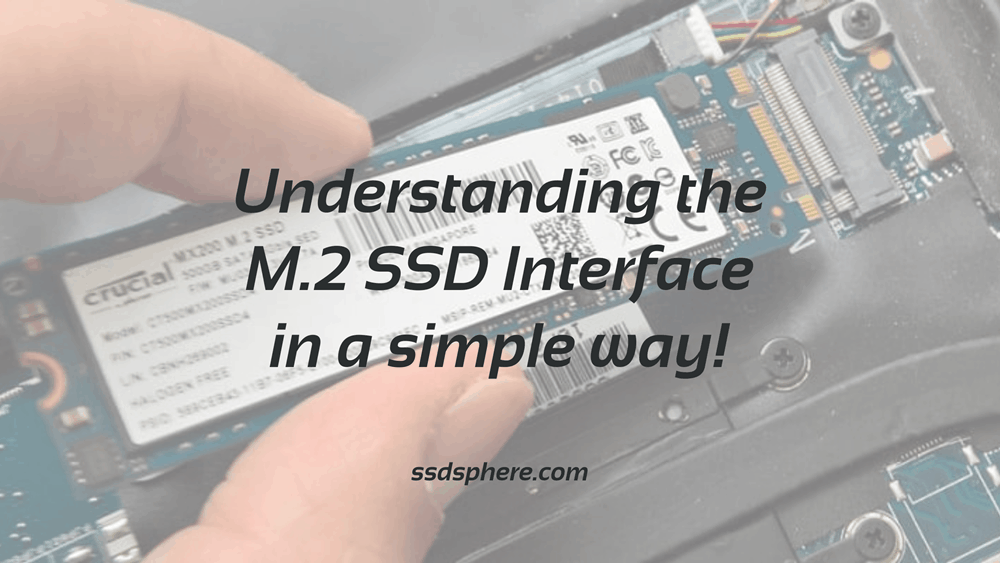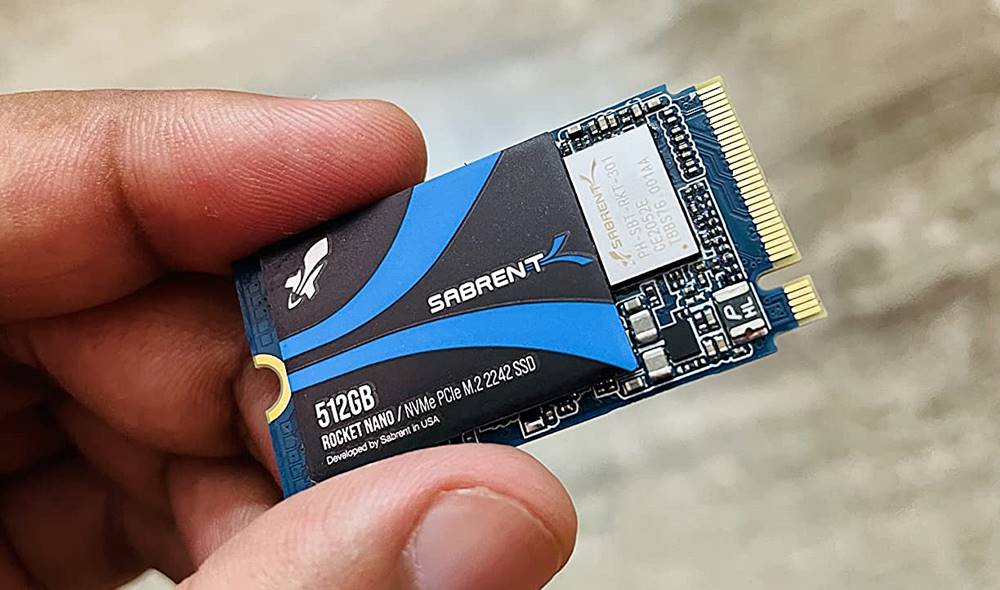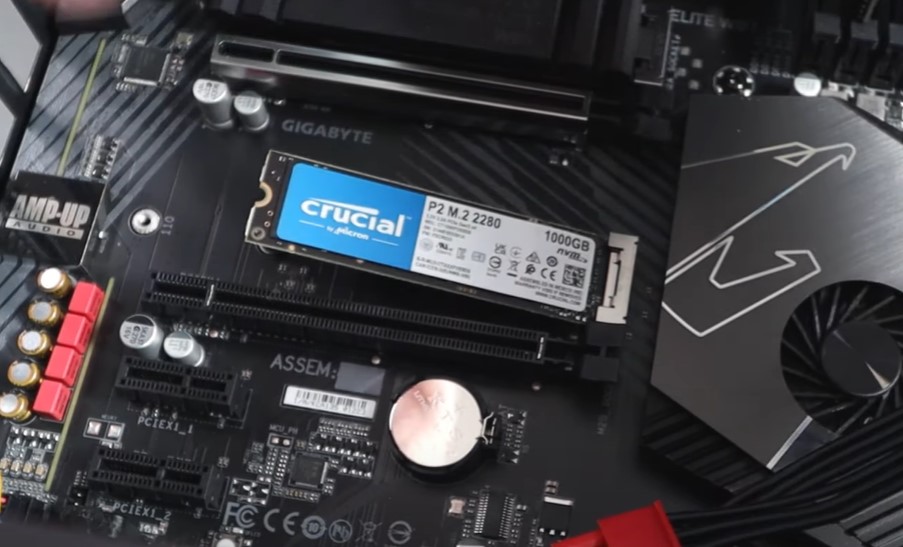The most successful and popular SSD Form Factor till this time is the M.2 factor. M.2, formerly known as the Next Generation Form Factor (NGFF), is a specification for internally mounted computer expansion cards and associated connectors. It replaces the mSATA standard, offering a more flexible and faster solution for utilizing the PCIe (Peripheral Component Interconnect Express) interface.
M.2 SSDs stand out by offering versatility in size and connectivity. They come in various lengths (e.g., 2280, 22110) and can connect through different keys (e.g., B, M) to support different interfaces, including PCIe x2, PCIe x4, SATA, and even USB 3.0, in some cases. This versatility makes M.2 SSDs suitable for a wide range of applications, from ultra-thin laptops to high-performance desktops, where space and speed are critical considerations.
Now, without any further discussions, let’s understand the M.2 Form Factor in the easiest way possible.

What is M.2?
When the mSATA launched back in 2009, people were considering it as a game-changer in the computer industry. But, after a very short time, the M.2 was launched with a great boom and it just dumps the hype of mSATA. The M.2 port was very small compared to the SATA port. It was smaller than the mSATA as well. But, M.2 devices were capable of using the PCIe protocol which is the main reason why it is very popular even after a decade.
The motherboard manufacturers can choose to equip these M.2 ports as a PCIe M.2, PCIe NVMe M.2, or a SATA M.2 port. According to these specifications, the M.2 SSDs can be connected to them.
There are different kinds of key specifications in the M.2 form factor which we are going to discuss below. But, for now, just understand that the M.2 interface is smaller yet fastest among all the available SSD interfaces.
What are the different Form Factor sizes in M.2?
M.2 SSDs come in a variety of form factor sizes, which are identified by a four or five-digit number. This number essentially indicates the width and length of the card. The width is always 22mm, but the length can vary, making certain M.2 SSDs more suitable for different devices based on space constraints. Here are the most common M.2 form factor sizes:
- 2242: This size measures 22mm in width and 42mm in length. It’s one of the smaller form factors, making it ideal for ultra-compact devices like laptops where space is at a premium.

- 2260: With dimensions of 22mm by 60mm, this form factor offers a balance between size and capacity. It’s used in both laptops and desktops that can accommodate a slightly longer SSD. This one is a rare form factor to see.
- 2280: This is the most common size for M.2 SSDs, measuring 22mm in width and 80mm in length. It strikes a good balance between physical size and storage capacity, fitting in the majority of laptops and desktops.

- 22110: Measuring 22mm in width and 110mm in length, this is one of the largest M.2 sizes available. It’s typically used in desktops or larger laptops with enough space to support such a long card, offering higher storage capacities.
These dimensions allow for flexibility in device design and can affect the storage capacity of the SSD. Longer SSDs generally have more room for storage chips, potentially offering higher capacities. However, the actual storage capacity also depends on the NAND technology used and the efficiency of the SSD controller.
Types of M.2 Slots (Form-Factor)
M.2 slots, which accommodate M.2 cards, come in various types that are key to understanding their compatibility with different M.2 SSDs. These slots are defined by their “keying,” which dictates the type of card that can be inserted. The keying is designed to prevent the insertion of incompatible cards, ensuring that only the correct type of device is used. The types of M.2 slots primarily differ in their pin configurations, which correspond to different interfaces and capabilities. Here are the most common types of M.2 slots:
M.2 B-Key
- Interface Support: Primarily supports SATA and PCIe x2 interfaces, but can also support USB 2.0 and 3.0, I2C, SMBus, and more.
- Common Uses: B-Key slots are often used for SATA SSDs, though they can also support PCIe x2 SSDs and other devices like cellular modems.
- Pin Configuration: Features a gap after the fifth pin, separating the first group of six pins from the rest.
M.2 M-Key
- Interface Support: Designed for PCIe x4 SSDs, offering higher data transfer rates compared to B-Key. Can also support up to four PCIe lanes, providing the fastest speeds for NVMe SSDs.
- Common Uses: Predominantly used for high-speed NVMe SSDs in both consumer and enterprise environments.
- Pin Configuration: Has a gap after the fifth pin from the other end, creating a different configuration from B-Key to support a higher bandwidth.
M.2 B&M-Key
- Interface Support: Can accommodate both SATA and PCIe x2 or x4 devices, offering a versatile option for different types of SSDs.
- Common Uses: These slots are flexible and can be found in systems that support a wide range of M.2 devices, making them common in laptops and desktops that prioritize compatibility.
- Pin Configuration: Features two gaps, allowing it to accept either B-Key or M-Key SSDs, though it may not provide the full performance benefits of a dedicated M-Key slot for NVMe SSDs.
Other Variants
While B-Key and M-Key are the most common, there are other less frequently encountered types designed for specific purposes, such as A-Key (often used for wireless cards) and E-Key. Each has a unique pin configuration and supports different interfaces, tailored for specific device types beyond SSDs, including Wi-Fi, Bluetooth modules, and more.
Compatibility and Usage
When selecting an M.2 SSD or device, it’s crucial to match the card type with the slot available on the motherboard or device. Compatibility is not just about physical fit but also about the supported interfaces (e.g., PCIe, SATA) and the performance capabilities of the slot. For example, installing an NVMe SSD into a B-Key slot designed for SATA will not work due to interface incompatibility, while a B&M-Key slot can offer flexibility but may not provide the optimal performance for an NVMe SSD if it’s limited to PCIe x2 speeds.
Choosing the Right M.2 SSD
Choosing the right M.2 SSD involves several considerations to ensure compatibility, optimal performance, and that it meets your storage needs. Here’s a detailed guide to help you make an informed decision:
1. Determine the Compatible M.2 Slot Type
- Identify the Slot on Your Motherboard: Check your motherboard’s specifications to find out which M.2 slot(s) it has (B-Key, M-Key, or B&M-Key). This determines whether you can use SATA or PCIe/NVMe SSDs, or both.
- Slot Physical Size: Ensure the physical dimensions (length and width) of the SSD are supported by your motherboard. Common sizes include 2242, 2260, 2280, and 22110, where the first two digits represent the width (22mm) and the latter two or three digits represent the length.
2. Choose Between SATA and NVMe
- SATA SSDs: If your motherboard has a B-Key slot or you prioritize cost-effectiveness over speed, a SATA M.2 SSD might be the right choice. These are generally slower than NVMe models but are sufficient for general computing needs.
- NVMe SSDs: For high-performance tasks like gaming, video editing, or if you have an M-Key slot, consider an NVMe SSD. They utilize PCIe lanes, offering significantly faster read/write speeds than SATA SSDs.
3. Consider the Performance
- Read/Write Speeds: NVMe SSDs offer superior speeds. Look at the sequential read/write speeds indicated by the manufacturer, but be aware of the PCIe generation (e.g., Gen3 vs. Gen4), as this affects the maximum achievable speed.
- PCIe Generation: PCIe Gen4 SSDs offer double the bandwidth of Gen3 SSDs, leading to faster data transfer rates. Ensure your motherboard supports the PCIe generation of the SSD for optimal performance.
Why M.2 SSDs are so fast?
First of all, all M.2 devices are not faster than the SATA. The M.2 SATA SSD can achieve a speed up to 600 MB/s as per the SATA protocol.
The thing that makes M.2 fast and compatible with high-speed SSDs is the PCI Express. In addition, by using the NVM Express as the logical device interface, these data read/write speeds can reach sky heights. PCI Express overcomes the limitations of parallel connection interfaces such as PCI and AGP. The PCI Express or PCIe uses serial connections by which we can achieve very high data read-write speeds. So, when we combine those PCIe lanes with the M.2 form factor and NVM Express, the capable devices can overcome most of the speed hurdles.
How to check the type of M.2 port on my laptop or motherboard?
Just grab your manual and check the storage specifications. You will see whether your system has an M.2 port or not. The same manual will give you the details of whether the port supports NVMe or not along with the total supported storage space for that slot.
If you have a desktop, you can easily see the M.2 slot manually and check the key placement as we discussed above. If it’s M-Key, you can connect an M.2 NVMe or M.2 PCIe, otherwise, the B-Key slot will accept only an M.2 SATA SSD. In some cases, users make a mistake by installing an M.2 NVMe SSD inside the M.2 PCIe-only slot. This will also bottleneck your overall SSD performance. So, I would suggest you go through the manual anyway.
Another way is to get in touch with your manufacturer’s customer support and confirm everything from them.
Frequently Asked Questions
M.2 SATA SSDs use the SATA interface with lower data transfer rates, suitable for general computing needs. M.2 NVMe SSDs utilize PCIe lanes for significantly higher read/write speeds, ideal for demanding applications like gaming and content creation.
Check your motherboard’s specifications for an M-Key slot or PCIe support listed under the M.2 slot details. Most modern motherboards support NVMe SSDs, but older models may only support SATA.
No, you need to check the supported lengths (e.g., 2242, 2260, 2280, 22110) in your motherboard’s documentation. The most common size supported is 2280.
PCIe Gen3 and Gen4 refer to the generation of the PCIe interface, with Gen4 providing double the data transfer rate of Gen3. Ensure your motherboard supports Gen4 to fully utilize a Gen4 SSD’s speeds. Now, Gen 5 drives are available which are much faster than both of these.